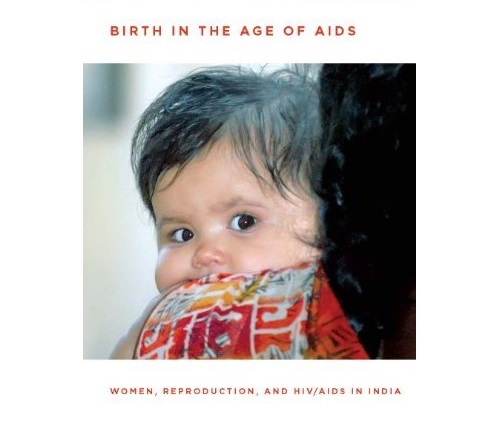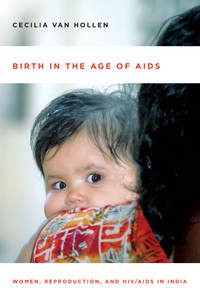

Birth in the Age of AIDS covers a lot of ground – for instance, Chapter 2 provides a comprehensive overview of how AIDS took hold in India, and government and organizational responses to its spread. It is worth reading the book in detail for her intersectional approach to how divergent responses to HIV and AIDS bring cultural values, social relations, and domestic and global economic concerns into sharp focus. Readers interested in how SRHR development policy functions in reality will find her work particularly compelling. I discuss just two of the central themes here—gendered stigma and informed consent—that best illustrate how her text works as a transnational feminist approach to HIV and AIDS prioritizing local-global interconnections and disadvantaged women’s perspectives typically absent from policy-making. These themes point to overarching conditions that may constrain or support these women’s reproductive “choices”, and the degree of agency they have in a given context to exercise their options.[3]
Van Hollen seamlessly moves from broader theoretical understandings of how stigma develops and ‘attaches’ to identity in Tamilian cultural constructions of gendered stigma and women’s sexuality (Chapter 5). Following a familiar paradox, deep anxiety and ambivalence about female sexuality manifests in the idea that women are supposed to uphold social ‘morality’ by their sexual ‘purity’ but are simultaneously the embodiments of desire, excess, and in this case disease. In her ethnography, Van Hollen cites a common statement that HIV and AIDS is a “women’s disease”, originating in female bodies particularly when involved in sex purely for pleasure.[4] Under this standard, any HIV+ woman is socially stigmatized as immoral, lustful, and/or a sex worker. And here’s the biggest catch with the PPTCT program: a common unintended consequence of women learning of their status first (due to prenatal testing) is that they are blamed for originating the infection. Men can continue to “avoid moral blame” by refusing testing, and thus stigma attaches only to women (page 157). This occurs despite the fact that men usually die from the disease first and, as these women report, often show symptoms before the marriage is arranged. Van Hollen asserts that part of the reason the government encourages simultaneous partner testing is to prevent moral stigma from attaching to HIV+ women due to sociocultural assumptions about their sexuality, but it is often impossible to convince the husband to take the test or for him to take time off work to go to the hospital. Gendered stigma and norms about women’s sexuality—and who it ‘belongs’ to—also appear in the kind of treatment they receive from medical providers. Doctors frequently ‘out’ women as HIV+ to their families because, given they belong to the same local kinship networks, they do not consider HIV and AIDS status an individual matter requiring doctor-patient confidentiality but feel they have a social obligation to inform.
A second major theme addresses the dynamics of ‘informed consent’ (Chapters 3 and 4). Van Hollen tackles this from two angles: consequences when consent is absent or unevenly applied with regard to PPTCT prenatal testing, and the degree to which poor HIV+ women can consent to participate in programs that offer prenatal care and postpartum support, but have their own potentially exploitative agendas. She questions the effectiveness of informed consent practices when applied by counsellors in busy hospitals with no private space, suggesting that in many cases consent is haphazardly acquired—if at all—and may function more in name as a development buzzword. After learning their status, poor HIV+ women have few options for obtaining medication, replacement feeding (formula) for newborns, and means of livelihood if they are widowed. Many turn to the prenatal services provided by the Y.R. Gaitonde Centre for AIDS Research and Education (YRG Care), but in doing so are automatically enrolled in clinical trials benefitting multinational pharmaceutical corporations. Van Hollen is distressed at how these women are being used for their “biopower”, but most interviewees shrug: it’s the best, and often only, option they have for survival. World Vision, a global evangelical Christian aid organization, also reaches out to HIV+ women in Tamil Nadu. The women who have relied on World Vision felt obligated to convert to Christianity and give up their right to contemplate abortion in order to continue staying in the organization’s hostels. This is a clear violation of these women’s religious and reproductive freedom, yet, again, their response is apathetic. If they have no other options, can it be said that they truly consented to the strings attached to these resources?
Van Hollen’s critiques of World Vision and the YRG scheme are warranted. Especially in terms of the religious freedom issues and anti-abortion ethos, she could have gone into much more depth; comprehensive research is urgently needed on this front. Her concluding chapters end on a more uplifting note, discussing the potential of the numerous feminist, human rights-based support networks like PWN+ that also emerged with the state’s neoliberal withdrawal from welfare and an influx of international funding to combat AIDS. After becoming involved with PWN+, many women seize the political visibility that comes with claiming a ‘positive’ identity. They become spokespeople who publicly address stigma and seek legal redress to secure their right to marry or remarry, have custody of their children, and collect their due inheritance from in-laws. Van Hollen observes that while HIV can bolster pre-existing gender-based discrimination, women who join these organizations are actively pushing back to not just address HIV and AIDS-related gendered stigma but also create dialogue and political momentum for combating gender discrimination for women in Tamil Nadu and India more broadly, in particular by attempting to break taboos relating to widowhood. It is impressive that these women feel empowered to pursue their rights even though they are multiply stigmatized as low caste, HIV+ widows. It would be interesting to know, however, whether some women in this situation publicly claim their HIV+ identity in order to feel empowered to refuse the mandate to become a wife and/or mother. Given her focus on reproduction, it is understandable that Van Hollen did not include this perspective, but additional work should explore the ways in which HIV+ women may contribute to alternative cultural narratives.
Birth in the Age of AIDS is a quick, compelling read that will appeal to readers working in a number of related fields. Her work does not dismiss funded NGOs and other civil society organizations as having succumbed to ‘NGO-isation’ that puts donor interests first. Rather, she hints at the delicate balance advocates have to strike in relation to rapidly shifting policy imperatives and local needs, and provides a poignant reminder that there are often unintended consequences of activism that only come into focus in hindsight.
[1] Many women find out their status very late in a pregnancy because it is the first time they have been able to access prenatal care, given the distance they have to travel to hospitals if they live in rural areas, fears that they will be mistreated by medical staff because of their low caste status, or because women’s health care may not be a priority when family resources are limited (Chapter 6, 131-132).
[2] Jean Comaroff has observed a similar phenomenon in her work on South Africans’ responses to HIV and AIDS. See “Beyond Bare Life: AIDS, (Bio) Politics, and the Neo-Liberal Order,” Public Culture 19.1, 2007.
[3] Van Hollen follows Ahearn’s (2001) definition of agency as “the culturally constrained capacity to act”, and is careful not to characterize low caste Indian women as especially deprived of agency, instead maintaining that all of us act within such culturally constrained spaces.
[4] Pages 106-108. This phrase was common in advertisements about HIV and AIDS, associating the virus with ‘promiscuous women’ and sex workers.